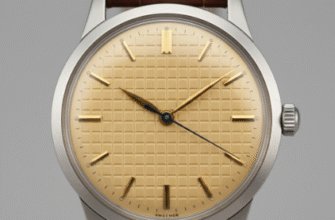Think about the blur of a hummingbird’s wings or the subtle vibration of your phone. These are examples of a world operating on a timescale far faster than our own, the world of
high-frequency movements. While we live our lives in seconds and minutes, much of the technology we rely on performs its magic in milliseconds and microseconds. This isn’t just about being fast for the sake of speed; it’s about harnessing rapid oscillations to achieve a level of precision that would otherwise be impossible. Uncovering the secrets of these movements reveals a fundamental principle that underpins everything from manufacturing to digital photography.
At its core, a high-frequency movement is simply a cyclical motion that occurs many times per second, measured in Hertz (Hz). A 100 Hz movement, for instance, completes its back-and-forth cycle 100 times every second. While our own muscles are slow and deliberate, designed for power and flexibility, many machines utilize actuators—devices that convert energy into motion—capable of mind-boggling frequencies. These can be piezoelectric materials that expand and contract when voltage is applied, or magnetic voice coils similar to those in a speaker. The magic lies not in the movement itself, but in what controlling that movement at a high frequency allows an engineer to do.
The Theoretical Edge: How Frequency Forges Precision
The primary benefit of high-frequency systems is their incredible ability to perform
error correction on the fly. Imagine trying to balance a long pole on the palm of your hand. You can’t just hold your hand perfectly still; you have to make constant, tiny, and rapid adjustments to counteract every little wobble. If you tried to make slow, deliberate corrections, the pole would fall long before you could react. This is the essence of a high-frequency feedback loop.
The Power of Constant Correction
In a technological system, sensors are constantly measuring a variable—like the position of a robotic arm or a printer head. This measurement is fed back to a controller, which compares the actual position to the desired position. If there’s a difference (an error), the controller tells an actuator to make a correction. When this entire loop—measure, compare, correct—happens thousands of times a second, errors are stamped out almost the instant they appear. The system doesn’t have time to drift significantly off course. This results in incredibly smooth and accurate motion, turning what would be a series of jerky steps into a fluid, continuous path.
The effectiveness of this process is grounded in control theory. To accurately control a system, you must be able to measure and react to changes at least twice as fast as the fastest significant change you expect to see. This principle, a simplified take on the Nyquist-Shannon sampling theorem, is the mathematical backbone of high-frequency control. It explains why faster feedback loops inherently lead to more stable and precise outcomes.
Overcoming Physical Limits with Dithering
Another fascinating benefit is a technique called
dithering. All mechanical systems suffer from imperfections like static friction (or “stiction”), where it takes more force to get something moving than to keep it moving. This can cause jerky, imprecise starts and stops. High-frequency systems can overcome this by introducing a constant, tiny, and rapid vibration to the component. This oscillation is often too small to be noticeable in the final output, but it’s enough to keep the component in a state of micro-movement, effectively breaking the hold of static friction. It’s like gently shaking a salt shaker to keep the salt flowing smoothly instead of waiting for it to get stuck and then hitting it hard. This same principle can also average out imperfections in sensors, leading to a more accurate reading over time.
High Frequency in Action: The Technology Around Us
Once you know what to look for, you start seeing the impact of high-frequency movements everywhere. These are not niche laboratory concepts; they are the workhorses of modern engineering, enabling tasks that demand a fusion of speed and microscopic accuracy.
Manufacturing and Data Storage
In the world of manufacturing, CNC (Computer Numerical Control) machines and 3D printers rely on high-frequency control to guide their tool heads. This is what allows them to carve smooth curves from a block of metal or lay down plastic filament with pinpoint accuracy. Without it, every circle would be a polygon and every smooth surface would be a series of tiny steps. Perhaps one of the most incredible examples is the head actuator in a hard disk drive (HDD). To read and write data, a tiny head must “fly” nanometers above a platter spinning at thousands of RPM, navigating to the correct data track in milliseconds. This feat is only possible through an extremely high-frequency control system making constant adjustments to keep the head perfectly aligned.
Optics, Imaging, and Haptics
Your digital camera is another prime example. When you press the shutter button, the autofocus system uses a piezoelectric motor to move lens elements back and forth at a high frequency, measuring contrast until the image is perfectly sharp. The optical image stabilization (OIS) feature works similarly; it detects the shake from your hands using gyroscopes and then moves the lens or sensor with high-frequency actuators in the exact opposite direction to cancel out the motion. This all happens in real-time, preserving the clarity of your photo. Even the haptic feedback in your smartphone or game controller is a product of this principle. The difference between a sharp “click” sensation and a soft “buzz” is nothing more than a carefully controlled high-frequency vibration generated by a linear resonant actuator.
The Challenges on the Path to Higher Frequencies
Pushing for ever-higher frequencies is not without its difficulties. As systems move faster, they tend to generate more heat due to both electrical resistance and friction, which can degrade components and affect accuracy. The materials themselves also face incredible stress. Vibrating a component millions or billions of times over its lifespan can lead to material fatigue and eventual failure. Furthermore, the computational demand on the controller increases dramatically. Processing sensor data and calculating the correct response thousands or even millions of time per second requires specialized and powerful processors. Engineers must constantly balance the quest for
precision with these very real physical and computational limits, making trade-offs between speed, longevity, and energy consumption. The future of fields like nanotechnology and microsurgery depends on overcoming these very hurdles to create even faster and more delicate tools.









